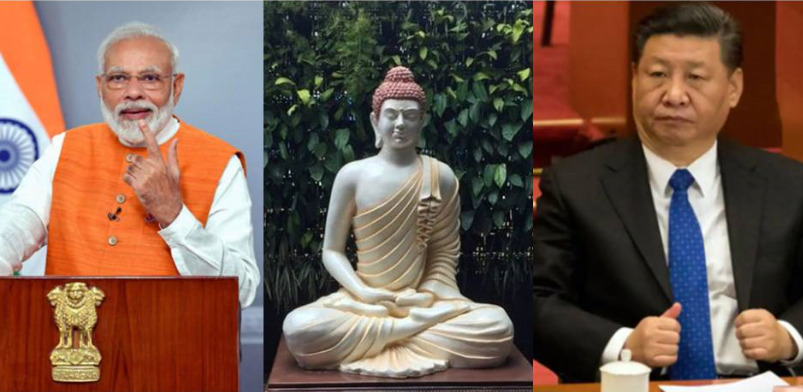India under Prime Minister Narendra Modi is known for using soft diplomacy as a means to reach its greater diplomatic goals. Building upon his Act East policy, the Prime Minister on Tuesday virtually addressed the sixth Indo-Japan SAMVAD Conference and announced the creation of a Buddhist library that will bring closer the followers of Gautama Buddha and Buddhism under one roof.
“Today, I would like to propose the creation of a library of all such traditional Buddhist literature and scriptures. We will be happy to create such a facility in India and will provide appropriate resources for it,” said PM Modi whilst further adding that “The library will collect digital copies of all such Buddhist literature from different countries, it will aim to translate them, and make them freely available for all monks and scholars of Buddhism.
The Samvad Conference revolves around the need to build the future of Asia on the positive influence of traditions of non-violence and democracy in Asia. The first conference, Samvad-I, was held at New Delhi and at Bodh Gaya in 2015.
Gautama Buddha founder of Buddhism achieved enlightenment in India’s Bodh Gaya. The place is visited by thousands of pilgrims from across the world every year. Buddhism is the common thread that binds the East Asian countries together and New Delhi knows it for a fact.
From Japan to Vietnam to Krygstanto Tibet to Russia and several other countries – Buddhism has a strong cultural and religious impact throughout this region. Buddhism even reached China from India in the first century CE. Visit by Chinese Buddhist monk Xuanzang to India in AD 630s has been much talked about.
While China is the biggest trading partner of ASEAN and exerts considerable influence over East Asia, New Delhi has found an Achilles Heel to corner Xi Jinping and dilute his hold over the region.
Xi Jinping and CCP’s atrocities against the religious minorities have reached the Buddhist as well after decimating the Uyghur Muslims. Earlier this year, an enraged CCP had demolished a 1,000-year-old Buddhist temple in its Shanxi province.The Buddhist temple in Shanxi province had become an eyesore to the majority of Han population in this area.
The Fuyun Temple gaining popularity amongst the followers of Buddhism in Chinese as well as the Tibetan population was unpalatable to the Chinese Communist Party government in Yuci district of Jinzhong prefecture.
In March, eight Buddhist temples in the Yongchuan district of Chongqing were closed on directives from the local government. Officials threatened to demolish them if orders were not executed.
PM Modi is subtly using the teachings of Buddha to bring these countries together with India by consciously decoupling them from China. During last month’s Shanghai Cooperation Organization (SCO) virtual meeting of the heads of governments, India being the host, took the opportunity to highlight the common Buddhist heritage. With China in the meeting as well, India’s move might not have gone down well with the CCP.
Earlier, during the India-Sri Lanka virtual summit, India had announced a $15million grant to Sri Lanka to deepening people-to-people linkages between the two countries in the sphere of Buddhism.
India under PM Modi has been taking a number of steps internationally to signify the shared cultural heritage. India, the land of Buddha is using its unique advantage to snatch East Asian leadership from China

